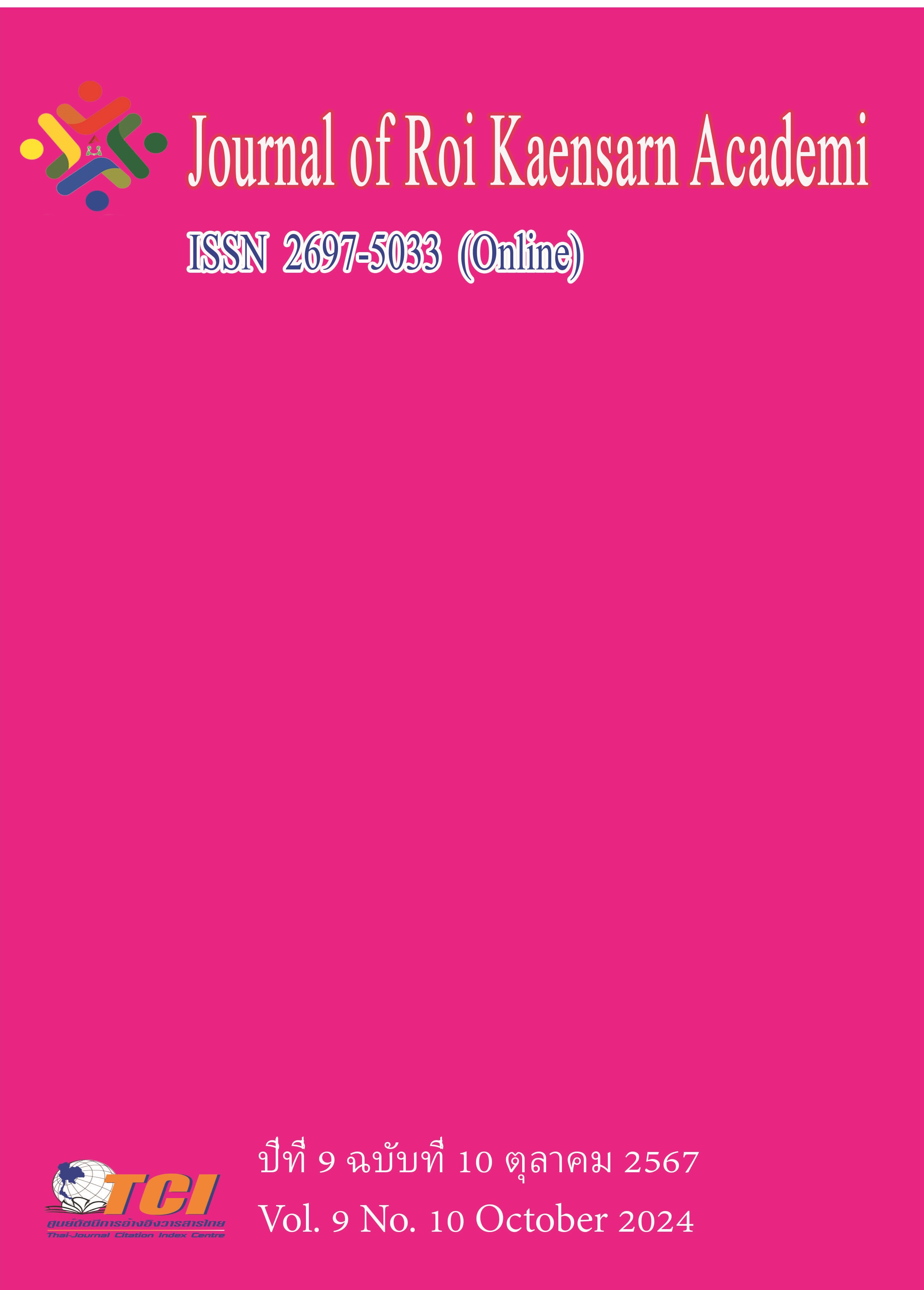A Study of the Commonalities in the "Ca Da Bo" Dance of the Han and Yi Ethnic Groups in Baoshan, Yunnan
Main Article Content
บทคัดย่อ
Background: The "Ca Da Bo" dance is a traditional folk performance found among both the Han and Yi ethnic groups in Baoshan, Yunnan. It integrates elements of dance, percussion, and ritual, reflecting the cultural identities and shared heritage of these two groups. Despite the unique features of each group's version, the dances demonstrate significant commonalities, revealing the cultural exchanges that have taken place between them over centuries.
Research objectives: This study aims to explore the commonalities in the "Ca Da Bo" dances of the Han and Yi ethnic groups by examining shared elements in dance movements, formations, rhythm, style, spirit, props, costumes, and performance spaces.
Methodology: The research employs a mixed-methods approach, including a literature review, field observations, and comparative analysis of dance practices. Data was gathered through video recordings, interviews with practitioners, and direct observation of performances. The analysis focuses on identifying both the physical and cultural aspects of the dances that reflect their shared heritage.
Research results: The findings reveal significant similarities in the rhythmic structure, stylistic features, and cultural expressions of the Han and Yi "Ca Da Bo" dances. Both groups use similar formations, props, and costumes, while their dance rhythms and performance styles reflect a shared cultural spirit. Despite some regional variations, the dances showcase a common cultural foundation that has been preserved and transmitted through centuries of cultural exchange.
Conclusion: This study contributes to a deeper understanding of how traditional dances can act as a medium for preserving and promoting cultural heritage. The "Ca Da Bo" dance serves as a bridge between the Han and Yi ethnic groups, maintaining distinct cultural traits while fostering mutual understanding and cultural integration.
Article Details
References
Cheng, Y. (2022). A comparative study of the forms and development of the Lisu tribe's three-string dance in Longling and Tengchong, Yunnan [Doctoral dissertation]. Beijing Dance Academy.
Dong, S., & Yang, S. (2022). Research on the characteristics and development trends of ethnic dance creation in the new era. Contemporary Music, (03), 176-178.
He, H. (2022). On the aesthetic integration and temporal characteristics of modern dance art. Art Education, (05), 101-104.
Hua, L. (2015). Inheritance and protection of the original ecological "like-sport" intangible cultural heritage of the Yi nationality's singing and dancing in Weishan [Master's thesis]. Chengdu Sport University.
Jia, L. (2021). The clear sound of the margins: Cymbals in folk dance. Journal of Xinghai Conservatory of Music, (02), 151-161.
Kong, X. (2015). The role of folk artists in the transformation of ethnic dance art. Contemporary Sports Technology, 07, 225-226.
Tang, B., & Meng, X. (2022). Historical traces and modern modalities of "Stepping Songs" – The case of the Yi nationality's singing and dancing in Weishan. Contemporary Dance Art Studies, 7 (03), 23-30.
Tang, Y. (2020). An analysis of the aesthetic characteristics and causes of Yi dance. Popular Literature and Art, (01), 168-169.
Wang, M. (2019). Exploration of the development and characteristics of ethnic minority dances in Yunnan. Art and Technology, 32 (10), 116.
Yang, D. (2019). Discussion on the development issues of ethnic folk dances from the perspective of traditional cultural inheritance. Northern Music, 39 (13), 241-242.
Yue, L. (2018). The forms and development of "Nanjian Yi Singing" in Yunnan [Doctoral dissertation]. Beijing Dance Academy.
